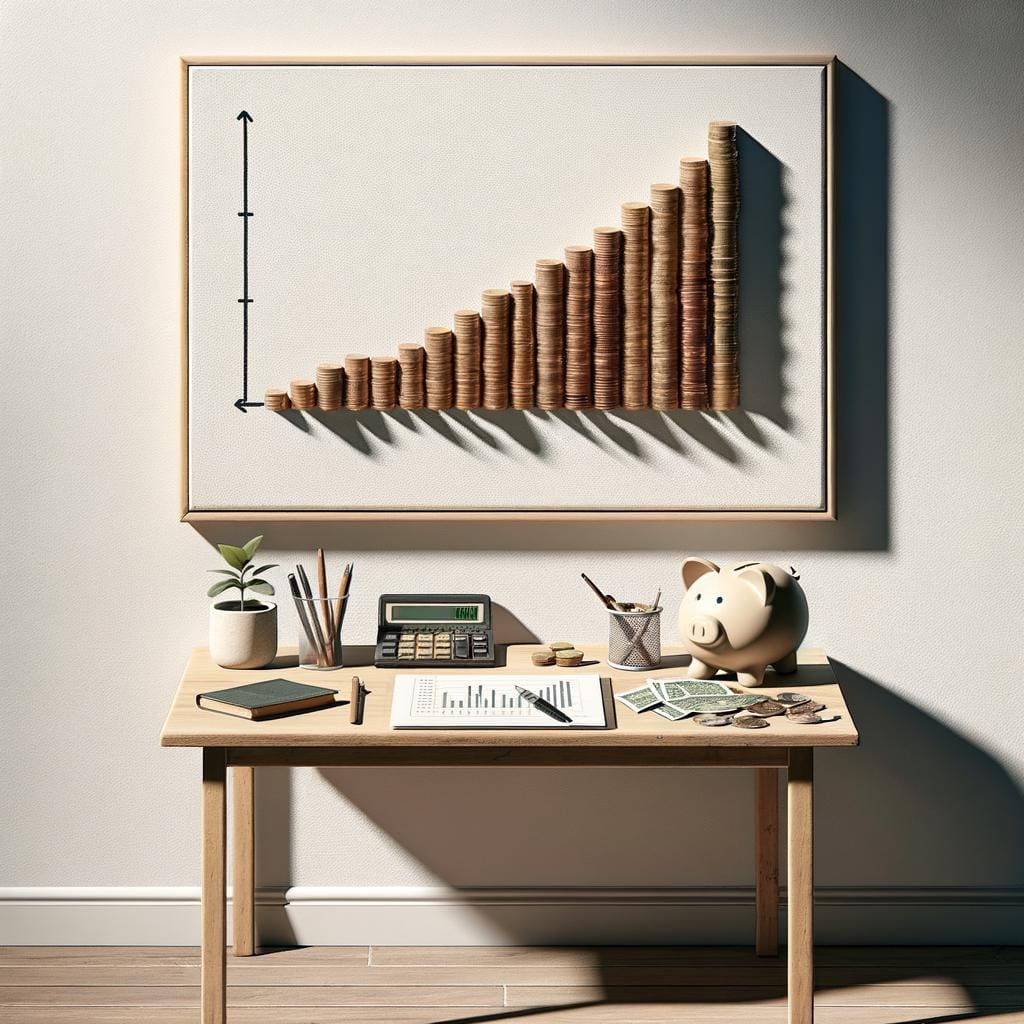In today’s fast-paced world, managing personal finances can often be overwhelming and challenging. This is where a bill paying station comes in handy. A bill paying station serves as a dedicated space to organize and keep track of all your bills, ensuring that payments are made on time and efficiently. By setting up a bill paying station in your home or office, you can take control of your financial responsibilities and avoid missed payments or late fees.
One of the key benefits of using a bill paying station is the convenience it offers. Having all your bills in one centralized location makes it easier to monitor due dates, amounts owed, and payment methods. Additionally, a bill paying station promotes organization by providing a structured system for storing bills, receipts, and other important financial documents. With everything in one place, you can quickly access information when needed and stay on top of your financial obligations.
Not only does a bill paying station offer convenience and organization, but it also saves you time in the long run. By dedicating a specific area for managing bills, you eliminate the need to search through stacks of paperwork or sift through emails to find the information you need. With a well-equipped bill paying station, you can streamline the payment process, reduce stress associated with financial management, and ultimately achieve peace of mind when it comes to your finances.
Benefits of Using a Bill Paying Station
A bill paying station can revolutionize the way you manage your finances by offering numerous benefits that make the process smoother and more efficient. One of the key advantages of using a bill paying station is the convenience it provides. With all your bills, supplies, and tools in one designated area, you can easily sit down and take care of payments without having to search for documents or materials scattered around the house.
Organization Is Another Crucial Benefit
that comes with utilizing a bill paying station. By having a dedicated space for all your bills, receipts, and payment records, you can keep track of due dates, payment amounts, and any related correspondence effectively. This level of organization not only helps you avoid missing payments but also allows you to have a clear overview of your financial obligations at any given time.
Moreover, using a bill paying station can save you valuable time in the long run. Instead of dealing with piles of paper or trying to remember which bills need to be paid when, having a centralized area where everything is laid out simplifies the task of managing your finances.
This time-saving aspect not only reduces stress associated with bill paying but also provides a sense of control and efficiency in handling your monetary responsibilities efficiently. By incorporating a bill paying station into your routine, you can experience these benefits firsthand and streamline the way you manage your bills effectively.
How to Set Up a Bill Paying Station
Setting up a bill paying station can be a game-changer when it comes to managing your finances effectively. This designated space in your home or office not only helps you stay organized but also ensures that you never miss a bill payment again. Follow this step-by-step guide to create a functional bill paying station that works for you.
Designate a Space
The first step in setting up a bill paying station is to designate a specific area where you will manage all your bills and related documents. This could be a corner of your home office, a desk in the living room, or even a drawer in the kitchen. The key is to choose a space that is easily accessible and allows you to focus on the task at hand.
Gather Supplies
Next, gather all the necessary supplies for your bill paying station. This includes basic office supplies such as pens, paper, envelopes, stamps, and a calculator. You will also need a calendar to track due dates, a filing system to organize bills and receipts, and any other tools that will help streamline the bill-paying process.
Create a System
Once you have your supplies ready, it’s time to create a system that works for you. Consider labeling folders for different types of bills (e.g. utilities, credit cards, rent/mortgage) and setting up reminders for payment due dates. You may also want to establish an online account log-in tracker if you prefer electronic payments. Personalize your bill paying station based on your preferences and needs to ensure it is efficient and effective for managing your finances.
By following these steps and customizing your bill paying station to fit your unique needs, you’ll be well on your way to staying on top of bills and having better control over your financial obligations. Remember, consistency is key when it comes to maintaining an organized bill paying station and avoiding missed payments or late fees.
Essential Supplies for a Bill Paying Station
Setting up a bill paying station requires having the right supplies to ensure smooth and efficient management of your finances. Without the necessary items, it can be challenging to keep track of payments and due dates. One of the essential supplies for a bill paying station is a reliable filing system. This could include folders, binders, or an accordion file to organize your bills by due date or category.
In addition to a filing system, having a calendar specifically dedicated to tracking bill payment deadlines is crucial. Whether it’s a physical calendar hung on the wall or a digital one on your phone or computer, being able to visually see when bills are due can help you stay on top of your payments. This visual reminder can prevent late fees and missed payments.
Another vital supply for your bill paying station is pens and envelopes. While this may seem like a minor detail, having these basic items readily available can save you time when it comes to writing out checks and mailing payments. Keeping all these supplies in one designated area will create an efficient bill paying station that streamlines the process of managing your financial obligations.
| Essential Supplies | Importance |
|---|---|
| Filing System | Organizes bills by due date/category |
| Calendar | Tracks bill payment deadlines visually |
| Pens & Envelopes | Aids in writing checks & mailing payments |
Tips for Efficient Bill Management
Managing bills can be a daunting task, but with the right strategies, you can stay organized and on top of your payments. One helpful tip for efficient bill management is to set specific dates each month dedicated to reviewing and paying bills.
Creating a routine can help you establish a habit of staying on track with your financial obligations. Consider designating a certain day of the week or every other week to sit down at your bill paying station and go through each bill methodically.
Another useful tip is to utilize technology to streamline your bill management process. Many banks offer online banking services that allow you to set up automatic payments for recurring bills. Take advantage of this feature to ensure timely payments without the risk of missing any due dates. Additionally, consider setting up email or text alerts for when bills are due as an extra layer of reminder.
In addition to utilizing technology, it’s important to maintain a filing system at your bill paying station. Keep all your bills, receipts, and payment confirmations organized in one place so you can easily reference them when needed. This not only helps in tracking your expenses but also serves as a backup in case any disputes arise regarding payments. By following these tips for efficient bill management, you can avoid missing payments and maintain control over your finances.
| Tip | Description |
|---|---|
| Establish a routine | Create dedicated dates for reviewing and paying bills regularly. |
| Utilize technology | Set up automatic payments and alerts to stay on top of due dates. |
| Maintain a filing system | Keep all bills and payment records organized at your bill paying station. |
Different Types of Bill Paying Stations
When it comes to setting up a bill paying station, there are numerous models and styles available in the market to suit different preferences and needs. Here are some examples of different types of bill paying stations that you can consider:
- Traditional Desk Organizer: This type of bill paying station typically includes compartments for storing bills, envelopes, pens, and other essential supplies. It is a classic option for those who prefer a more traditional approach to managing their bills.
- Wall-Mounted Bill Organizer: For those who have limited desk space or prefer a more minimalist look, a wall-mounted bill organizer can be a great solution. These organizers usually come with pockets or slots for sorting bills and important documents, keeping everything easily accessible and visible.
- Digital Bill Paying Station: In today’s digital age, there are also electronic options available for managing bills. A digital bill paying station can include apps or software that help you track due dates, set reminders, and make online payments conveniently from your computer or smartphone.
Each type of bill paying station has its own benefits and features, so it’s important to choose one that aligns with your personal preferences and organizational style. Whether you opt for a traditional desk organizer, a modern wall-mounted system, or a digital solution, having a designated space for managing your bills can greatly simplify the process.
Remember that the key to effective bill management is consistency and organization. By choosing the right type of bill paying station that complements your lifestyle, you can stay on top of your finances and avoid missing payments. Experiment with different models to find the one that works best for you and make the process of bill payment less stressful and more efficient.
DIY vs Pre-Made Bill Paying Stations
When it comes to setting up a bill paying station, one important decision you will need to make is whether to build your own DIY station or purchase a pre-made one. Both options have their own set of pros and cons that you should carefully consider before making a decision.
Building your own DIY bill paying station allows you to customize it to suit your specific needs and preferences. You can choose the design, size, and layout that works best for you. This can be particularly advantageous if you have unique requirements or limited space available. Additionally, creating your own station can be a fun and creative project that allows you to express your personal style.
On the other hand, purchasing a pre-made bill paying station offers convenience and saves you time and effort. These stations are often designed with efficiency and organization in mind, with features like built-in filing systems, calendars, and storage compartments.
Pre-made stations are ready-to-use right out of the box, eliminating the need for assembly or construction. This can be especially beneficial for individuals who prefer a hassle-free solution or lack the time or skills to build their own station.
While building your own DIY bill paying station may be more cost-effective in some cases, purchasing a pre-made one may offer better quality and durability. It’s important to weigh the upfront costs against the long-term benefits when deciding between the two options. Ultimately, the choice between DIY and pre-made bill paying stations will depend on your budget, preferences, and needs.
Real-Life Examples of Successful Bill Paying Stations
In conclusion, a bill paying station can be a game-changer when it comes to managing finances effectively. By providing a dedicated space to handle all your bills and payments, a bill paying station offers convenience, organization, and time-saving benefits. The ability to have everything you need in one central location streamlines the process of bill management and helps ensure that you stay on top of your financial obligations.
Setting up a bill paying station is relatively simple with the right supplies and guidance. From setting up a filing system to keeping track of due dates on a calendar, having essential supplies like pens and envelopes at hand can make the task of bill paying much easier. By following a step-by-step guide on creating your own bill paying station, you can establish a routine that promotes financial responsibility and efficiency.
By exploring different types of bill paying stations available in the market, you can find one that suits your personal preferences and needs. Whether opting for a DIY approach or choosing a pre-made station, weighing the pros and cons can help you decide on the best option for maintaining financial organization.
Real-life examples of successful bill paying stations demonstrate how individuals have utilized this tool to stay organized with their finances, showcasing the tangible benefits of implementing such a system in your own life. A designated bill paying station can be a valuable asset in managing your financial commitments effectively throughout each month.
Frequently Asked Questions
How Do I Set Up a Bill Paying System?
Setting up a bill paying system involves organizing all your bills, setting reminders for due dates, and choosing a method of payment that works best for you. You can use online banking to schedule automatic payments or opt for a manual system where you pay bills personally each month.
What Is Bill Payment Platform?
A bill payment platform is a service or software that helps individuals and businesses manage and pay their bills electronically. These platforms often offer features like automated payments, bill tracking, and reminders to ensure bills are paid on time. They provide a convenient way to streamline the bill payment process.
Who Can Help Me Organize My Bills?
If you need help organizing your bills, there are several resources available. You can reach out to financial advisors who specialize in budgeting and bill management. Alternatively, some banks offer services to help customers set up automatic payments or create personalized budgets based on their expenses. Additionally, there are many apps and online tools designed specifically for organizing bills efficiently.

Hello, I’m April Denton, your go-to expert for all things home decluttering and organization. With over a decade of experience helping individuals transform their living spaces into serene, clutter-free sanctuaries, I am passionate about the life-changing benefits of decluttering. My journey into the world of organization began out of necessity, juggling a busy career and a bustling household. I quickly realized that a well-organized home was the key to a more balanced, stress-free life.





